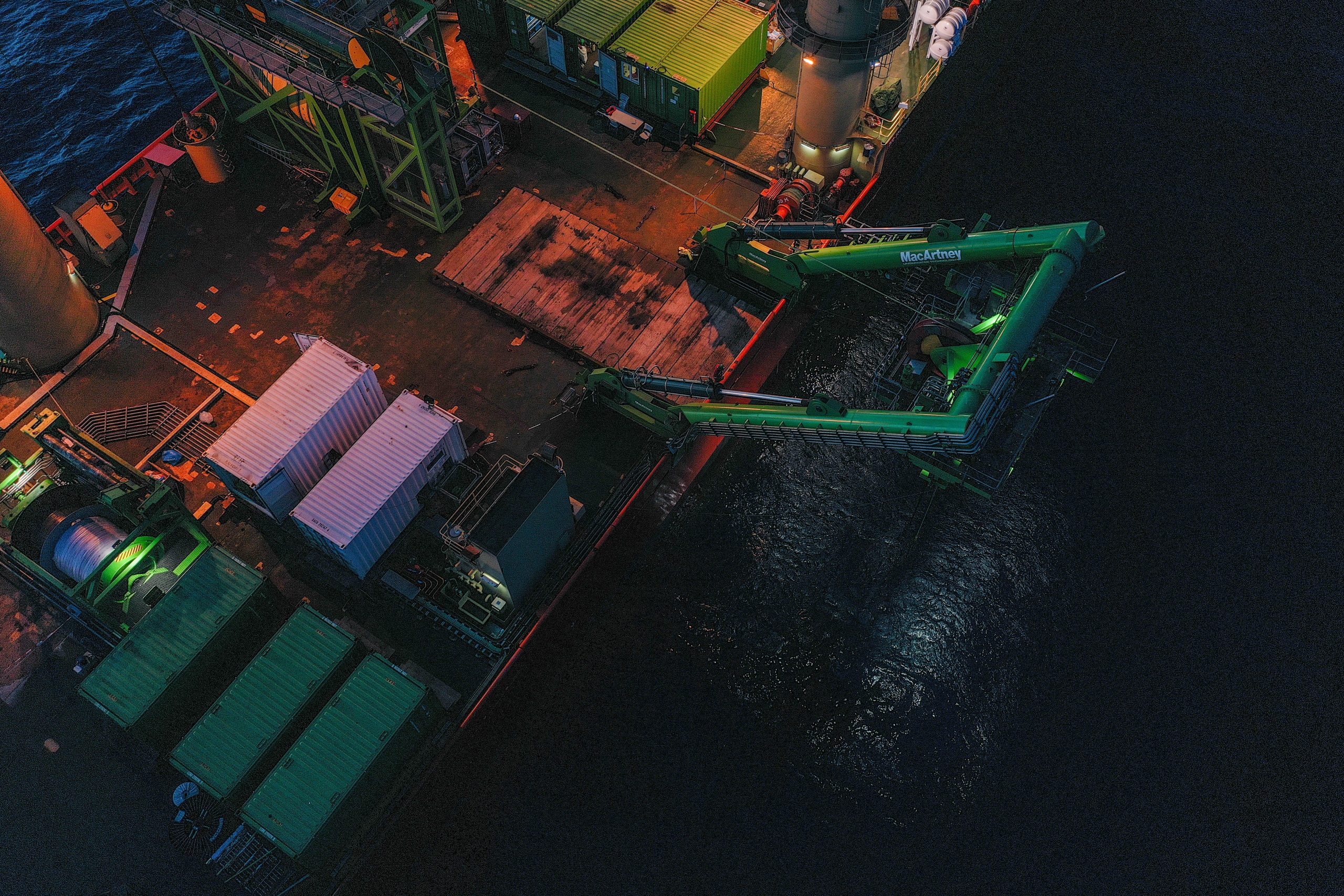
De Tijd: DEME collects ‘truffles from the ocean’ at a depth of 4,500 meters, by Marc De Roo
April 23, 2021
In The Media
Read the original article here.
DEME was the first to succeed in collecting metal-rich tubers from the bottom of the Pacific Ocean at a depth of 4,500 meters. The dredger hopes to tap a gold mine, because the tubers contain coveted metals. But environmental organizations are very critical.
'It is the first time in history that a robot has collected polymetallic tubers at that depth,' says GSR CEO Kris Van Nijen proudly. GSR, the deep-sea mining subsidiary of the Belgian dredger DEME, successfully tested its deep-water robot Patania, 4.5 km deep in the Pacific Ocean last week. The 1 kg manganese tubers that the GSR 'vacuum cleaner' equipped with sensors and cameras scraped from the seabed are loose at the bottom of the ocean. They contain high concentrations of nickel, manganese and cobalt, (valuable) materials that are vital for the production of electronics, smartphones and batteries.
o DEME has successfully carried out a test to collect metal-rich tubers from the bottom of the ocean with a robot. These tubers contain materials that are vital for the production of electronics and batteries.
o Based on the test, scientists will investigate the possible impact on the ecosystem of the ocean. Environmental organizations are critical.o DEME wants to use a larger robot in 2024 to retrieve the tubers and hopes to start commercialization in 2028.
o The Belgian dredging group has so far invested 100 million euros in its deep-sea mining plans.
Because of the fear that important raw materials on land will be depleted, DEME started a few years ago with tests to harvest manganese tubers on the seabed on a large scale. It hopes to tap a gold mine with this. The Clarion-Clipperton Zone between Hawaii and Mexico - an area the size of the US designated by the International Seabed Authority (ISA) for seabed mining - contains more nickel, manganese and cobalt than the rest of the world. DEME will have an area twice the size of Belgium in the zone.
The gold mine door is not wide open yet. 'Our prototype has succeeded in moving and picking up tubers,' says Van Nijen. 'In the next phase, hopefully 2024, we want to use a larger robot and bring the tubers to the surface. In 2028, after approval of the environmental impact reports, we hope to start commercialization. ' DEME has so far invested 100 million euros in its deep-sea mining project.
However, many questions remain about the impact of deep-sea mining on marine life and ocean biodiversity. DEME therefore decided to collaborate with the European research project MiningImpact. This delegated scientists from 29 European institutions to investigate the environmental effects of the test in a research vessel in addition to that of GSR. This ranges from direct effects to sediment plumes that can fly up for miles.
Van Nijen: 'Until now, scientists had to rely on lab simulations and computer models. With this test we have real samples. ' He expects the first scientific analysis within six months. 'We will only apply for an operating permit if science shows that the cultivation of the tubers is ecologically sound.'
Protest from Greenpeace
The environmental organizations are against. Greenpeace went to protest last week with its famous ship Rainbow Warrior. According to An Lambrechts, Greenpeace Belgium's specialist in ecosystems, deep-sea mining will seriously disrupt the ecosystem. She advocates recycling instead of more extraction.
"The more scientific studies by marine biologists and geologists we see, the more concerned we become," says Sarah Vanden Eede, environmental specialist at WWF Belgium. 'Now it is a small test. But on a large scale, the risks are incalculable. Once this has been initiated, it cannot be stopped. Extraction is finite. We are more committed to a circular economy. '
"GSR has never clearly stated in its environmental impact report what its environmental monitoring entails and what it does itself," says Ann Dom of the NGO Seas At Risk. 'We also don't know how long GSR will continue to monitor. Decades of monitoring are needed to know the long-term impact and to evaluate whether damage can be repaired. '
Dom also believes that GSR should finance the monitoring of possible impact on biodiversity itself and should not leave it to a group of independent experts who receive government support from various countries, including Belgium. "We want to know from the Belgian government, which is the world leader in ocean conservation, why it sponsors deep-sea mining. Scientists have been warning for years about the risk of irreversible, large-scale biodiversity loss. How can the government monitor such projects? '
Professor of marine biology Ann Vanreusel (UGent), who is present on the second ship with her research team, understands the criticism of the environmental organizations but thinks they are blunt. 'They are rightly concerned about the possible consequences for the environment. To be clear: no form of mining has no impact. '
As an independent scientist, Vanreusel does not want to speak out for or against deep sea mining. 'We will investigate the impact of this test and then publish our findings. The outcome can go in any direction: from a 'no-go for deepsea mining' to 'exploitation under those conditions'. We hope that ISA and DEME will take this into account. ' According to Vanreusel, DEME works very transparently, contrary to what some NGOs claim. "It follows international legislation perfectly."
DEME is not the only company with an interest in 'the truffles of the ocean'. The Canadian-Dutch consortium DeepGreen / Allseas will start testing next year. UKSR (Lockheed) in 2023.
